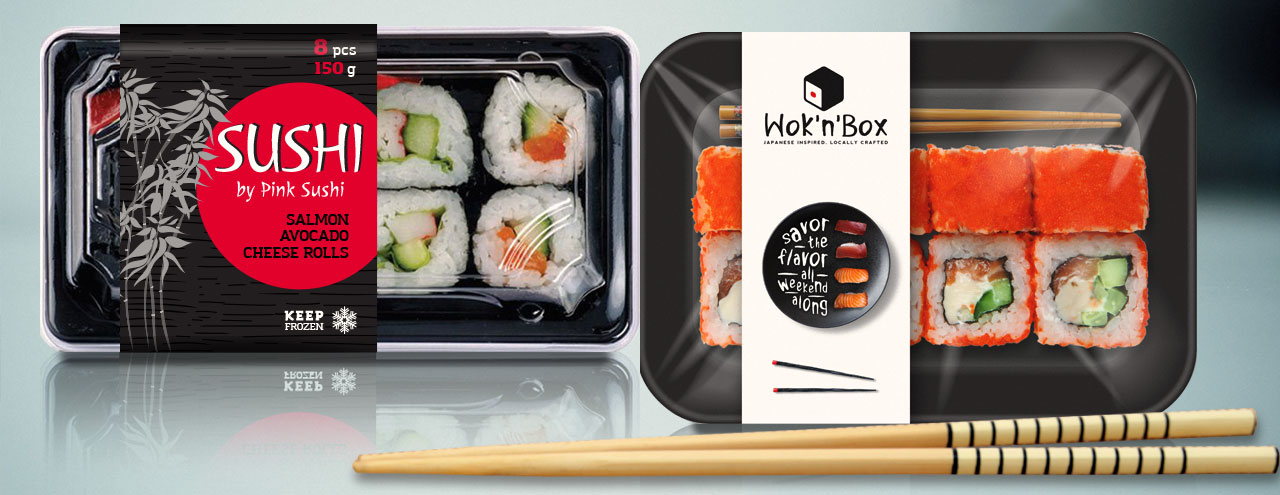Modern sushi recipes don’t have much semblance to the sushi that first appeared in Southeast Asia as a way to preserve fish. For hundreds of years the making of sushi evolved, from pressing cleaned fish between rice and salt using a stone to prepare it for eating, through rice fermentation and adding vinegar to ingredients, to finally coming up with a sushi version that we eat in restaurants today. It seems it traveled a long way from modest street food to a real (and not cheap) delicacy.
Today we can eat sushis in luxury venues, at conveyor belt sushi restaurants, deli style restaurants or we can buy them as fast food in grocery stores. Sushi producers who package their sushi products and distribute them packaged to supermarkets in the U.S. need to label their product according to Food and Drug Administration guidelines. That means that their sushi packaging needs to contain the following information:
- Common name of the food (“Sushi”, or something more specific, such as “California Roll Sushi”)
- Address of the sushi producer, packer or distributor
- Net contents weight
- Ingredients list, including common allergens (such as fish, egg, etc.)
- Nutrient information
Since many fast food sushi products are distributed and stored frozen, the packaging needs to include that information on the label as well. An example of such a statement would be: “Keep frozen until used.” This is important to include on any seafood label, because it could be unsafe to thaw and then refreeze seafood.
The labels could also include additional, voluntary information such as “best-before” date, storing and handling suggestions, interesting facts about the origin of that particular sushi recipe, or health claims. The FDA has very strict regulations concerning health claims, so if the producer cannot support their claim, it is best not to try to use it on the label to attract customers. If the FDA finds that a health claim on a sushi label is misleading or inaccurate, the producer will face harsh penalties.
The Use of Frozen Label Materials for Sushi Products
All food products that are meant to be stored in the freezer need durable, moisture-resistant and freezer proof labels. These labels are made from strong freezer grade adhesive and any of the specialty materials such as coated paper or vinyl that make sure that the product label won’t crack in cold temperature.
Many food producers don’t consider label materials seriously and end up with food packaging labels that peel off their product, which can easily turn a customer away. FreezerLabels.net team helps sushi manufacturers choose proper label materials, colors, printing methods and label sizes for their seafood products. We want to make sure that the product labels that leave our facilities perform well in freezing conditions and are stylishly designed to attract consumers.
We offer quality blank labels as well as custom designed stickers that are made according to our customer’s specific requirements.
Interesting Sushi Facts:
Though the FDA warns consumers of the dangers of mercury that can be found in some types of fish, the USDA recommends eating fish and seafood at least twice a week. The benefits of eating sushi are manifold, because certain studies show that wasabi used in sushi:
- helps strengthen the immune system
- is rich in beta-carotenes
- has antibacterial properties
- helps mitigate microbial elements and latent pathogens
- kills some form of Escherichia Coli and Staphylococcus bacteria
- helps reduce asthma attacks

